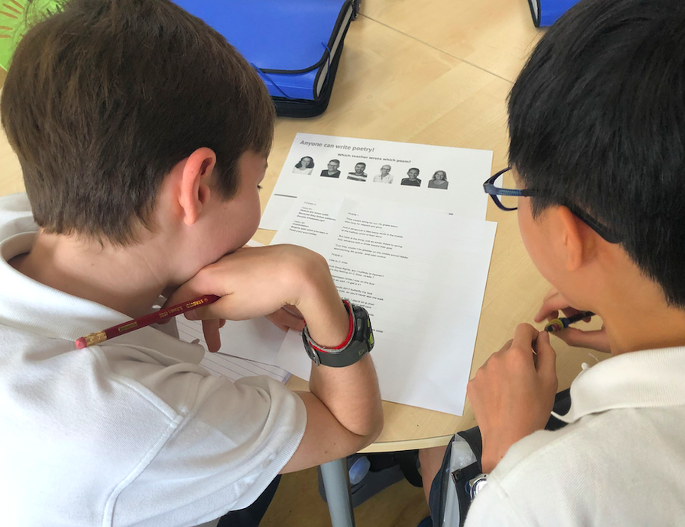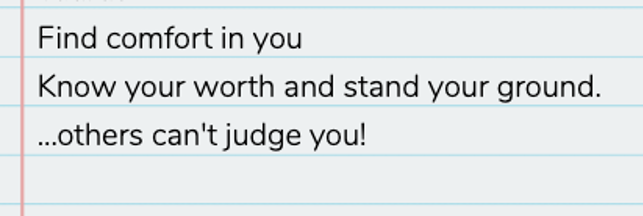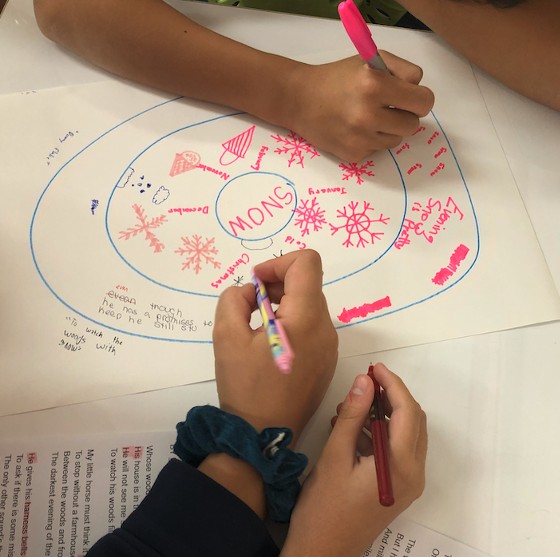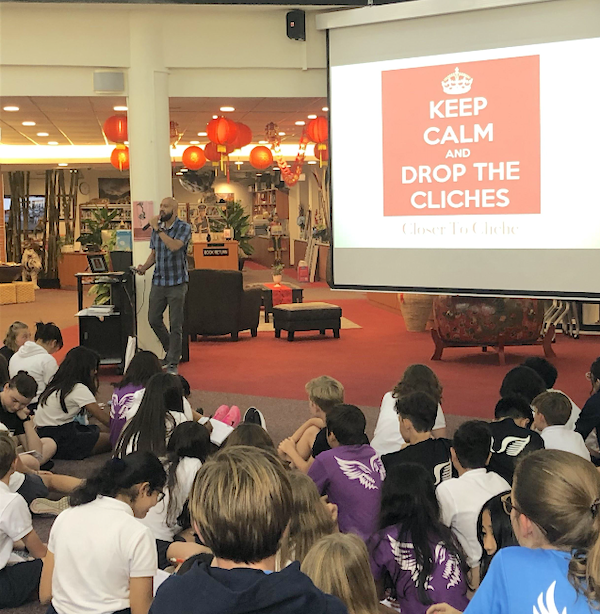6 Poetry Activities You Can Use All Year
A MiddleWeb Blog
 It’s that time of year again, when we seek new ways to engage our students in the study of poetry. A personal goal of mine is to ensure that every student leaves this unit with a favorite poem.
It’s that time of year again, when we seek new ways to engage our students in the study of poetry. A personal goal of mine is to ensure that every student leaves this unit with a favorite poem.
The only way I can ensure that everyone finds a poem that speaks to them is through lots of exposure, which I will be doing through a variety of short, collaborative activities. In addition to the ideas I shared on MiddleWeb last year, here are some new ways I am teaching poetry this season and throughout the school year.
Spoken poetry every day
I start each class with the “Spoken Word Poem of the Day.” My students watch a video of a spoken word performance, and then spend 10 minutes responding to it in their poetry notebooks. Their responses can be written as an analysis, as a poem, or as a paragraph responding to the issue.
An amazing aspect of spoken word poetry is that there is such diversity in what is readily available. Singapore, where I teach, is one of the most multicultural cities in the world, and I want to make sure that my class’s reading reflects that. There are so many incredible spoken word videos online, but it can take time to review them all to find ones that are suitable for middle school students. Here are a few that are popular with my classes:
“Mrs. Ribeiro” by Sarah Kay
“Love in the Time of Wearing Shorts” by Marc Nair
“Letter to the Playground Bully” by Andrea Gibson
“Before the Internet” by Phil Kaye
“Touchscreen” by Marshall Davis Jones
“Times I’ve Been Mistaken for a Girl” by Alex Dang
“What Latinos Look Like” by Carlos Andrés Gómez
Visualizing poems
Inspiration for the poetry unit can come from anywhere. I was watching “Let’s Go Luna!” with my toddler and there was an interstitial with an illustrated retelling of Robert Lewis Stevenson’s “Foreign Lands.”
This inspired me to ask students to create a visual analysis of a poem. The images they used would demonstrate their understanding of the meaning. While they don’t have time to create an animated video, they are able to find four images that represent a poem, and then share the poem and why they selected the images.

Students determine which teacher wrote which poem.
A few months before our poetry unit began, I asked the other teachers on my team to write a poem (and gave them some simple frameworks to follow, if necessary). On the first day of the unit, students tried to match their teachers’ photos to the unidentified poems. They got most of them wrong, but their reasoning was thoughtful, and they saw that everyone can write a poem.
Fun with haiku horoscopes
As our poetry unit fell during Chinese New Year, I adapted Brian Bilston’s haiku horoscopes into writing haiku about the different years in the Chinese zodiac. This was a fun warm-up at the beginning of class that many students continued in their free time. My teaching partner did a twist on this activity and had students take a photo for homework, then write a haiku about it the next day.

An example of a student Horoscope Haiku.
Another brief activity is to give students a poem without the title and have them write one, then justify it to their classmates. We do this activity a few times a week as an opportunity to understand the importance of title choices in their own writing.
The wonderful site Teach Living Poets featured an activity from Virginia teacher Jen Flisinger that asks students to select the most important word in a poem and then analyze how it fits in the poem, using concentric circles.
I loved this activity because it was an opportunity for students to read a classic poem (we read Robert Frost’s “Stopping by the Woods on a Snowy Evening”) and debate the author’s choices in a fresh way. I never expected students to get so heated about whether “Stopping” or “Snow” was a more important word!

Students analyze “Stopping by the Woods on a Snowy Evening” using an activity focusing on diction.
Which one doesn’t belong
As a way to get students reading and discussing a wide variety of poems, I modified an idea from Christopher Danielson’s Which One Doesn’t Belong? and made a handout with four short poems. Students had to decide which of the poems didn’t fit, and their arguments were fascinating.
Listening to their discussions helped me understand the level at which students were reading poetry: some students focused on meaning, while others decided based on poetic devices used. There was no stress involved because they knew there was no correct answer. This is a weekly activity for my class. A few short poems that elicit opinions are:
“You Fit Into Me” by Margaret Atwood
“Masks” by Shel Silverstein
“Always” by Lydiane Agustinus
“Late Fragment” by Raymond Carter
Adding real live poets to the mix
Find a way to bring real poets into your classroom, either virtually or face-to-face. My classes were able to attend a presentation with author K.A. Holt, who talked about her novels-in-verse. We were also fortunate to be able to spend a day with Marc Nair, a Singaporean poet (see his spoken poem above).
Mr. Nair emphasized the importance of having punch in their opening lines and to use “irritation as inspiration” for writing poetry. It was invaluable to have a professional critique their work and demonstrate the revision process in poetry.

Poet Marc Nair performs spoken word for the seventh graders.
I love that the poetry unit provides everyone with opportunities to be creative. It gives students the chance to break structure and punctuation rules to express themselves, and it lets me try out new methods of engaging students through short, accessible texts.
ALSO SEE MEGAN’S
Ideas to Integrate Poetry All Year Long
here at MiddleWeb.






























Megan always shares such excellent ideas! Thanks for this great resource on poetry!
Val